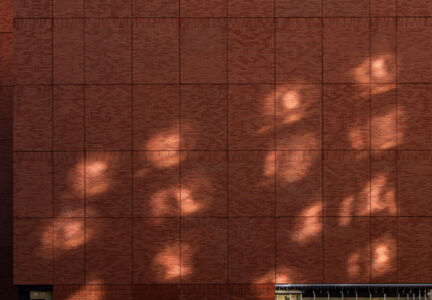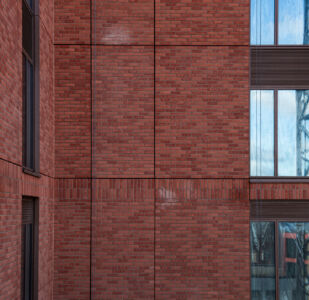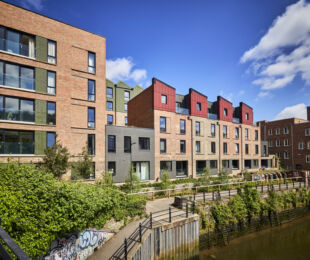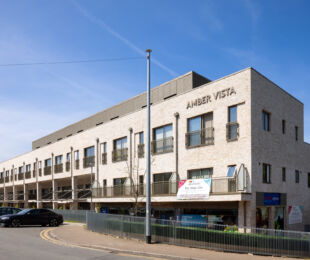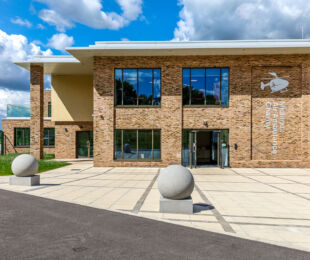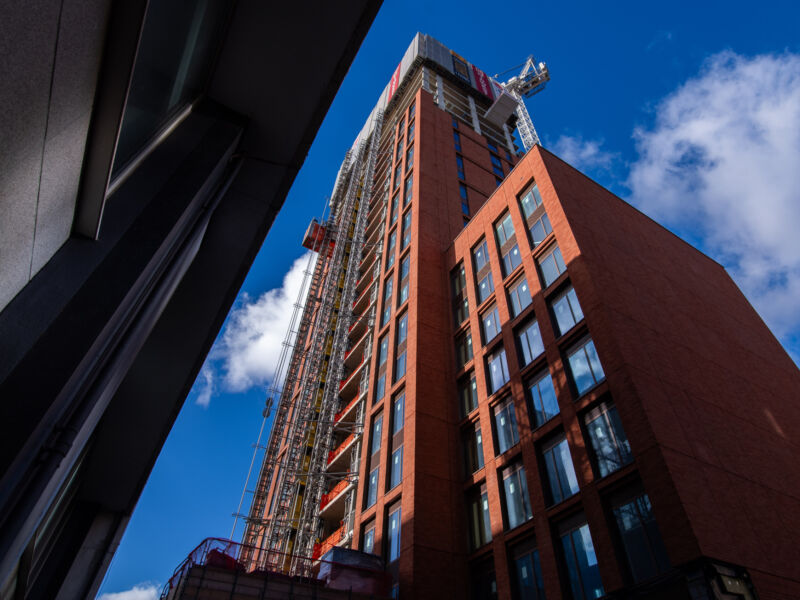
Due to complete in winter 2025, Crown Place is set to become one of Birmingham’s tallest brick-clad towers. Developed for Crown Student Living and designed by ECE Westworks, the scheme will provide 814 student beds across a 33-storey tower and two lower shoulder blocks, alongside over 13,000 sq ft of communal amenity space.
But beyond its scale and purpose, Crown Place is significant for another reason: it demonstrates how thoughtful design and advanced materials can transform urban development, with Forterra’s SureBrick system playing a central role.
Design Considerations: Building Tall with Brick
Cladding a tower of this scale in traditional brickwork would be complex, costly, and impractical. For Crown Place, design choices were guided by a series of clear considerations.
- Tight Site Access: Minimal space around the footprint required a façade system that could be installed efficiently without scaffolding.
-
Speed and Safety: Off-site prefabrication of over 2,700 unitised panels, complete with windows and brickwork, allowed faster assembly, reduced on-site labour, and improved safety.
-
Performance: Panels met rigorous CWCT standards for wind, water, acoustics, and fire, with flexible seals accommodating building movement and lightweight construction reducing structural load.
-
Sustainability and Precision: Factory production minimised waste and errors, ensured consistent quality, and reduced time working at height on the 33-storey tower.
Forterra SureBrick: Tradition Meets Technology
At the heart of this innovation lies Forterra’s SureBrick system, chosen to deliver the authentic character of clay brick while meeting the demands of high-rise construction.
SureBrick uses thin slips of clay brick, in this case the locally produced Medway Blend. This ensures the building reflects Birmingham’s proud brick heritage, while significantly reducing the weight of the façade compared to traditional masonry.
SureBrick is mounted on aluminium rails with a magnelis coating, designed in close collaboration with Hansen so that it integrates seamlessly with the prefabricated façade units. This close partnership between manufacturer and façade contractor has been key to maintaining both aesthetic quality and technical performance.
By combining Hansen’s aluminium modular frame with Forterra’s magnelis-coated rails, the SureBrick system delivers a faster, more efficient build process. This approach allows the façade to be made weather-tight earlier, speeding up the overall programme. At the same time, brick slips retain the core advantages of traditional brickwork, long-lasting durability and straightforward, low-cost upkeep.
Efficient and Sustainable
The reduced material use, and lighter construction translate into real sustainability benefits: less embodied carbon, smaller structural requirements, and easier handling. At the same time, SureBrick retains the durability, longevity and low-maintenance qualities of full bricks.
Forterra’s Technical Services Manager, Martin Smithhurst:
“The SureBrick used at Lancaster Street Birmingham is a fusion of unitised modular off-site construction and Forterra’s clay brick slip cladding system… working as a team with Hansen to develop the technical integration has been very successful.”
Looking Ahead
When Crown Place opens its doors, it will stand as a showcase for how clever design and innovative brick solutions can overcome challenges of height, access and sustainability.
It proves that clay brick remains a viable, beautiful material even on the tallest of buildings. It shows how collaboration between design teams, contractors, and manufacturers can push boundaries. And it sets a benchmark for future urban developments that seek to balance heritage, efficiency, and sustainability.
Crown Place is a case study in how design considerations and innovative brick systems go hand in hand. Forterra’s SureBrick has allowed Birmingham to gain a new landmark that is firmly rooted in the city’s architectural traditions - while also pointing to the future of modern construction.
Brick Bulletin | Feature 263

